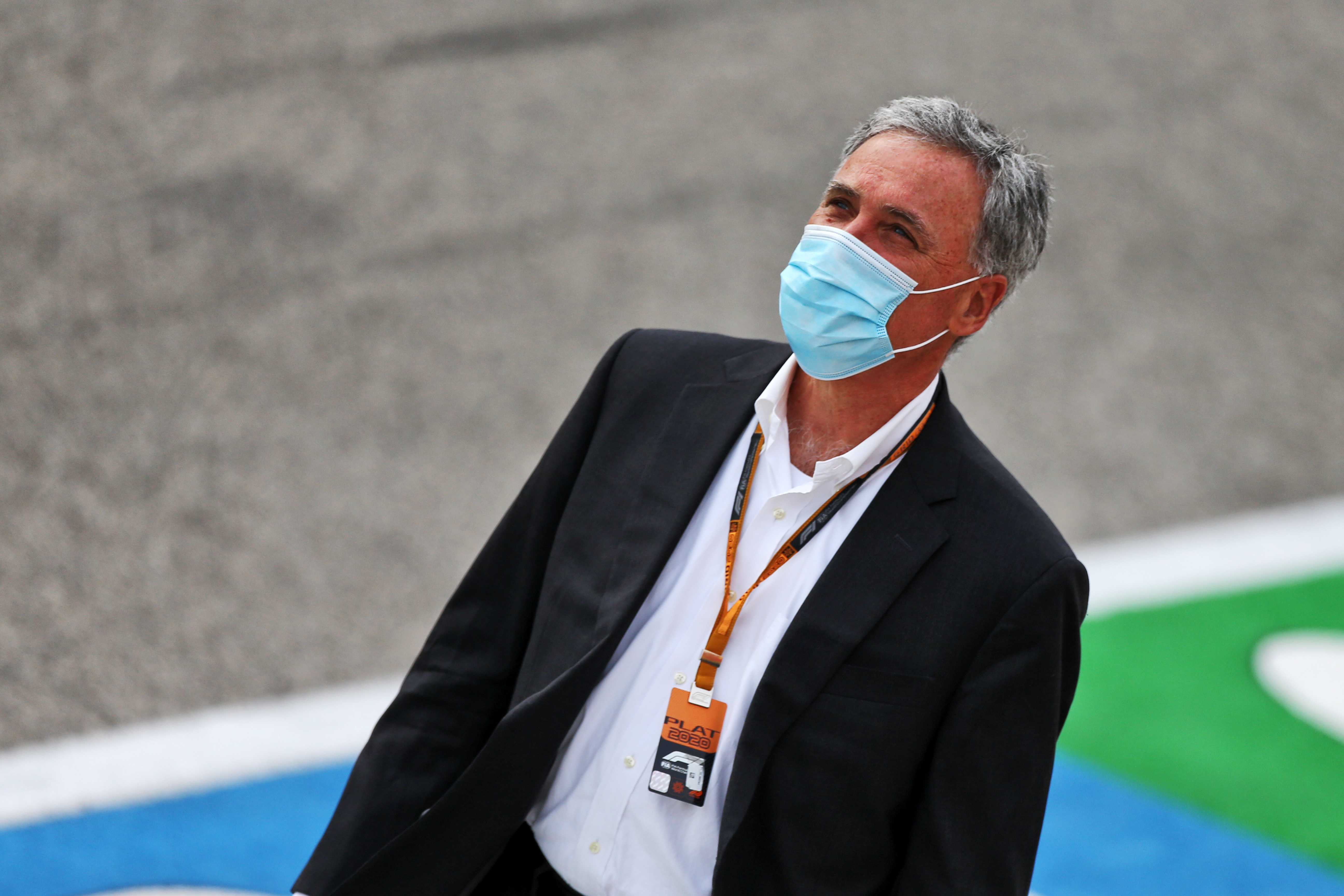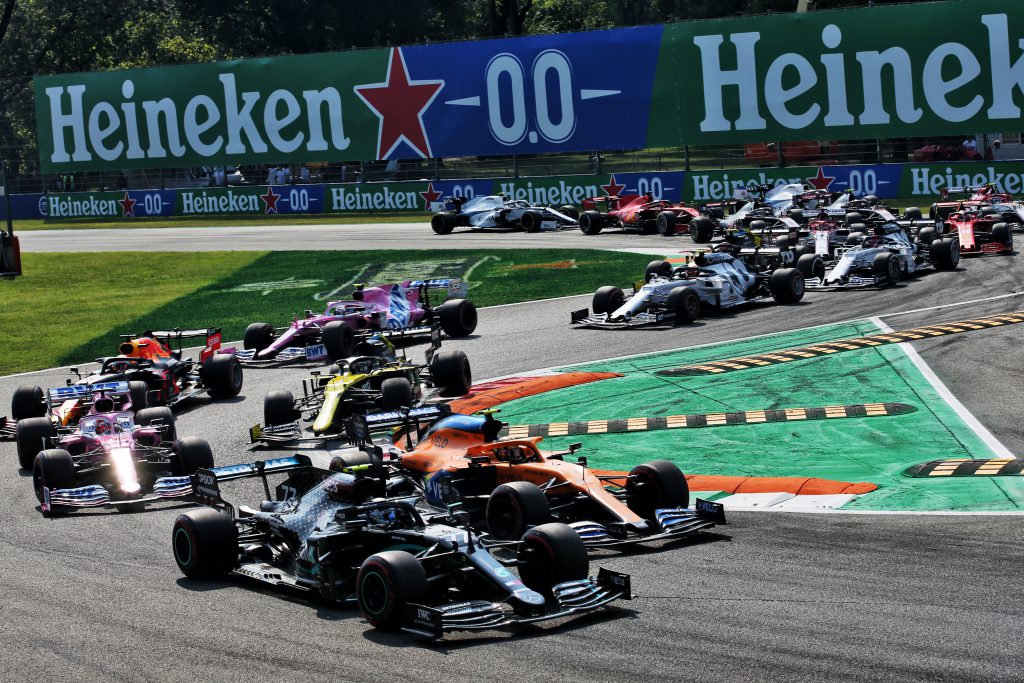Up Next

Formula 1 has officially announced its planned 2021 calendar, with a record schedule of 23 grands prix to be put forward to the FIA for World Motor Sport Council approval.
As reported by The Race on Monday night, the debut of the Vietnam Grand Prix has been removed from the provisional schedule due to the arrest of Hanoi People’s Committee chairman Nguyen Duc Chung on corruption charges unrelated to his role in bringing the F1 race to fruition.
Fitting 23 races into eight and a half months means some congested patches
Vietnam’s April 25 date remains on the calendar as a ‘to be decided’. The Race understands that the gap could be filled by an alternative flyaway such as a return for the Malaysian GP – last held in 2017 – or an early start to the European season using one of the surprise venues added to the reorganised 2020 calendar.
The other change from initially mooted versions of the 2021 schedule is that the Brazilian GP remains at Interlagos because the planned replacement venue in Rio will not be ready in time due to ongoing environmental opposition.
Provisional 2021 F1 calendar
March 21: Australia
March 28: Bahrain
April 11: China
April 25: TBA
May 9: Spain
May 23: Monaco
June 6: Azerbaijan
June 13: Canada
June 27: France
July 4: Austria
July 18: Britain
August 1: Hungary
August 29: Belgium
September 5: Netherlands
September 12: Italy
September 26: Russia
October 3: Singapore
October 10: Japan
October 24: USA
October 31: Mexico
November 14: Brazil
November 28: Saudi Arabia
December 5: Abu Dhabi
The season is due to start on March 21 with the Australian GP in Melbourne, and follows a largely traditional pattern.
Zandvoort’s return for the Dutch GP, which would’ve taken place in May on the planned 2020 schedule, is now slated for next September.
The recently-announced new race in Saudi Arabia is the penultimate 2021 round at the end of November.
Fitting 23 races into eight and a half months – with the nature of the 2020 season dissuading F1 from starting the 2021 calendar earlier than the third weekend of March – means some congested patches.
There are five instances of back-to-back pairs of GPs, and two ‘triple-headers’ of races on three consecutive weekends.
These follow the month-long summer break in August, with a Belgium, the Netherlands and Italy being followed by Russia, Singapore and Japan back to back a fortnight later.
It is not yet clear exactly what form pre-season testing will take.
With F1 teams carrying their 2020 designs into the 2021 season with only limited upgrades allowed, testing will be further reduced over this year’s six days of running.
A single test in Bahrain or two days each in Bahrain and in Spain are among the options mooted so far.
The 2020 season was due to be a record 22 rounds before the coronavirus pandemic led to radical changes.
Though 13 of the originally planned grands prix will not take place this year, F1 has still managed to create a 17-race calendar across July to December.
The Red Bull Ring, Silverstone and Sakhir all gained a second race each, while past venues the Nurburgring, Imola and Istanbul Park plus newcomers Mugello and Algarve were brought in to complete the schedule.
Australia, Vietnam, China, the Netherlands, Monaco, Azerbaijan, Canada, France, Singapore, Japan, the United States, Mexico and Brazil all missed out on their scheduled F1 races.
Although the worldwide effects of the coronavirus pandemic are sure to continue into 2021, F1 is confident that the season it has achieved this year and what it has learned so far means it can go ahead with committing to next year’s schedule with a reasonable expectation that the races will run as planned.

An F1 statement said: ”Formula 1 and the FIA put in place robust health and safety measures to allow the revised 2020 season to restart and run effectively.
“Our hosts for 2021 are reassured by our safe return to racing this season and confident that the plans and procedures we have in place will allow us to return to a level of normality for the 2021 season.”
Outgoing F1 chairman Chase Carey said that expectation of normality extended to a belief that spectators would be able to attend races again as standard.
The majority of the 2020 races have ended up being behind closed doors, even in cases where the initial hope was that this wouldn’t be the case.
“We are planning for 2021 events with fans that provide an experience close to normal and expect our agreements to be honoured,” said Carey.
“We have proven that we can safely travel and operate our races and our promoters increasingly recognise the need to move forward and manage the virus.
“In fact, many hosts actually want to use our event as a platform to show the world they are moving forward.”






